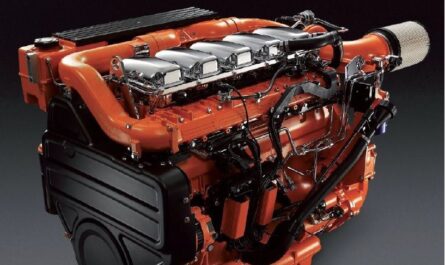
Introduction
Brakes are one of the most important safety features in any vehicle. The brake system allows the driver to slow down and stop the vehicle as needed. A well-functioning brake system is essential for safe driving. This article discusses the key components that make up a modern automotive brake system.
The Main Components
There are several major components that work together to slow and stop the vehicle.
Brake Pedal/Brake Booster
The Automotive Brake System pedal is connected to the brake booster. When the driver presses down on the brake pedal, it activates the brake booster. The brake booster multiplies the driver’s foot force and sends greater pressure to the rest of the brake system. This allows braking with less foot effort, especially at higher vehicle speeds. The booster uses vacuum pressure from the engine to help apply brake force.
Master Cylinder
The master cylinder is directly connected to the brake booster. When the booster is activated, it pushes the piston inside the master cylinder. This increases the fluid pressure in the master cylinder which then distributes brake pressure through hydraulic lines to the rest of the system. The master cylinder contains brake fluid which transmits pressure throughout the system.
Brake Lines and Calipers
Hydraulic brake lines carry pressurized brake fluid from the master cylinder to each wheel of the vehicle. At each wheel is a brake caliper. The caliper houses brake pads that press against the rotor or disc attached to the wheel when brake pressure is applied. As brake fluid pressure increases, it causes the caliper piston(s) to push the brake pads harder against the rotor, creating friction to slow the wheel down.
Brake Rotors/Drums
All modern vehicles use brake rotors, also known as discs, which are circular plates attached securely to each wheel. Older car designs sometimes used drum brakes which are cylindrical and wrapped around the wheel hub inside the brake drum. Both rotors and drums are the surfaces the brake pads press against during braking. The friction caused by the pads against the spinning rotors or drums slows and stops wheel rotation.
Anti-lock Braking System
An anti-lock braking system (ABS) prevents wheels from locking up during hard braking. It uses sensors to detect when a wheel is approaching lock-up, and it pulses the brake caliper pressure faster than the driver can with the foot pedal alone. This allows steering control and stability to be maintained even during emergency braking maneuvers. ABS has significantly reduced skidding and helped drivers maintain control in dangerous road situations.
More Advanced Components
Modern cars have integrated the brake system with other vehicle control technologies. Some of these include:
Traction Control- Sensors detect wheelspin and pulse individual brakes to transfer power to wheels with traction.
Brake Assist- Faster brake application in panic braking situations by increasing hydraulic pressure as fast as possible.
Electronic Stability Control- Works with ABS and traction control to actively brake individual wheels if the car starts to understeer or oversteer beyond safe handling limits.
Regenerative Braking- In hybrid/electric vehicles, kinetic energy from braking can be captured and stored in the battery through the electric motors supplementing traditional friction braking. This improves efficiency.
How the System Works Together
In summary, here is how the key automotive brake system components work together from pedal application to wheel braking:
– Driver presses brake pedal, activating brake booster
– Brake booster multiplies pressure and sends to master cylinder
– Pressurized brake fluid from master cylinder travels through brake lines
– Fluid pressure increases in brake calipers at each wheel
– Caliper pistons push brake pads against spinning rotors/drums
– Pad friction against rotors/drums slows wheel rotation
– ABS modulates pressure faster if wheels start to lock
– Vehicle decelerates and comes to a smooth, controlled stop
Routine Maintenance is Critical
For optimal safety and braking performance, it’s important the entire brake system is properly maintained. Pads and rotors will wear out over time and need replacement. Brake fluid should be flushed periodically. Hoses and lines may crack with age and require replacement. Brake calipers and cylinders can seize up if not serviced. Regular inspection and maintenance by a trained technician helps ensure the critical brake system components continue functioning reliably.
Conclusion
The complex automotive brake system allows for controlled and repeatable vehicle braking. While technologies have advanced braking in many exciting ways, the basic hydraulic and friction principles that slow and stop the vehicle remain largely the same. Understanding how the key components work together is important for drivers to appreciate why maintaining proper brake system function is so important for safety. When functioning properly, it provides the critical ability to slow down or bring a vehicle to a complete halt as needed.
*Note:
- Source: Coherent Market Insights, Public sources, Desk research
- We have leveraged AI tools to mine information and compile it


